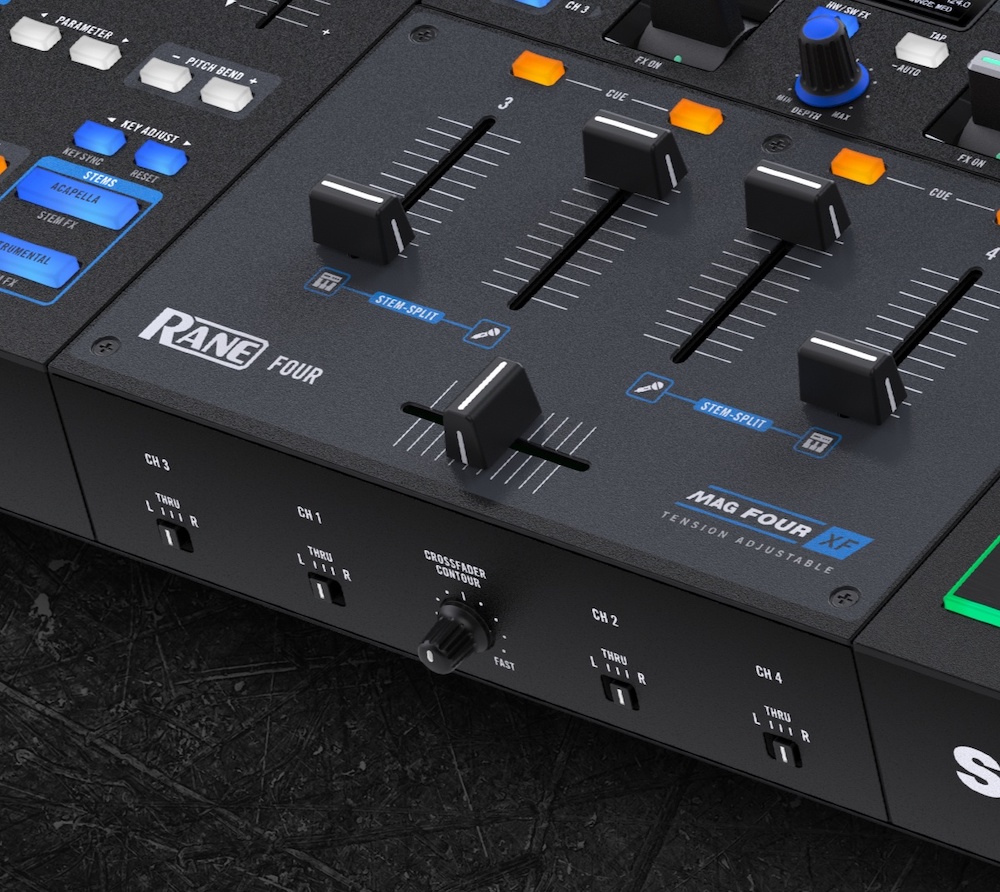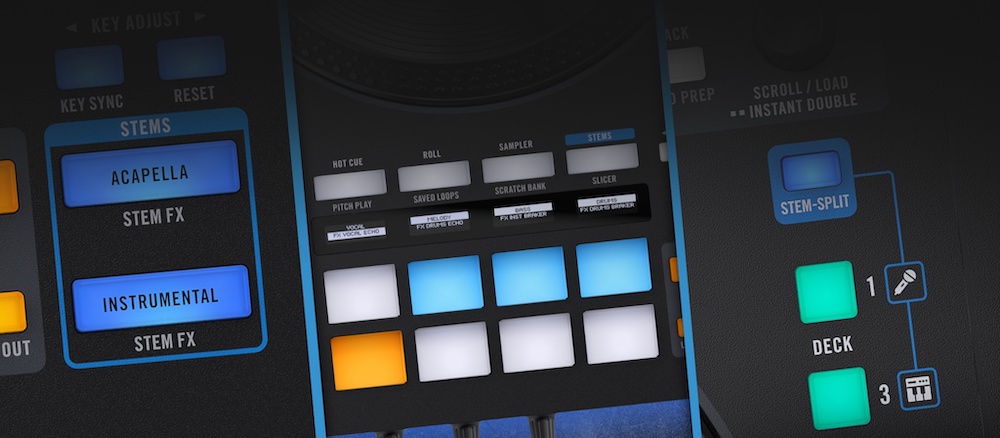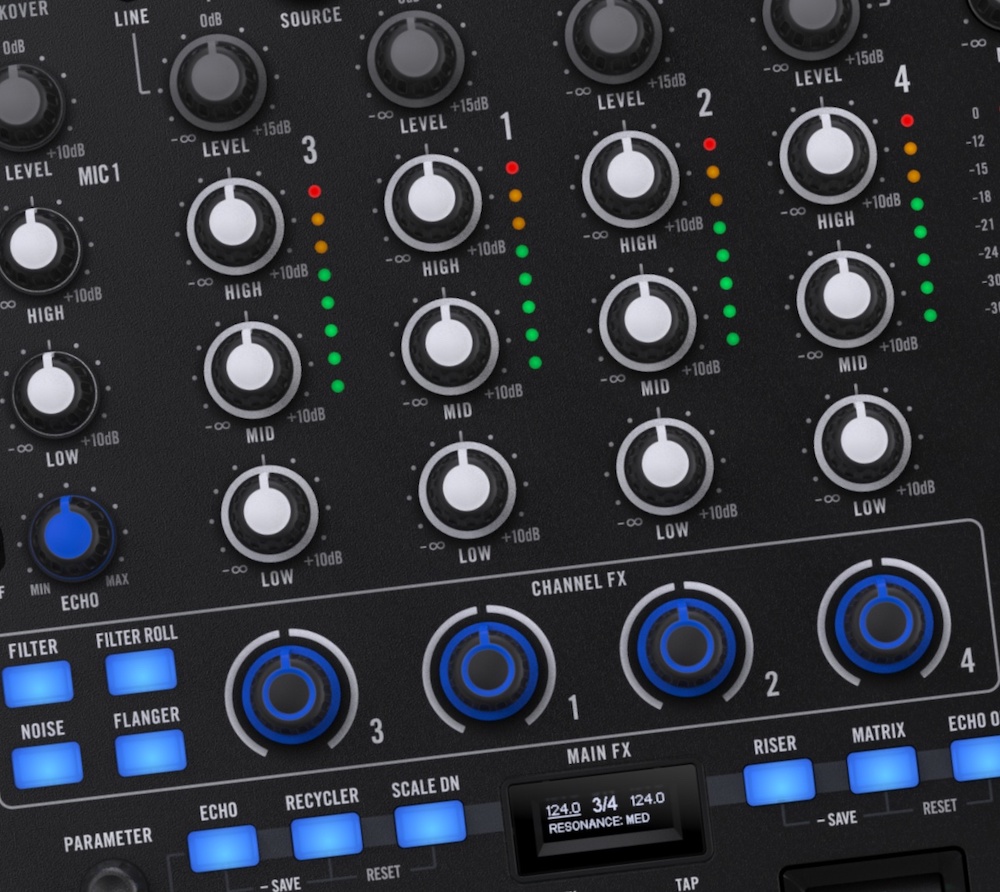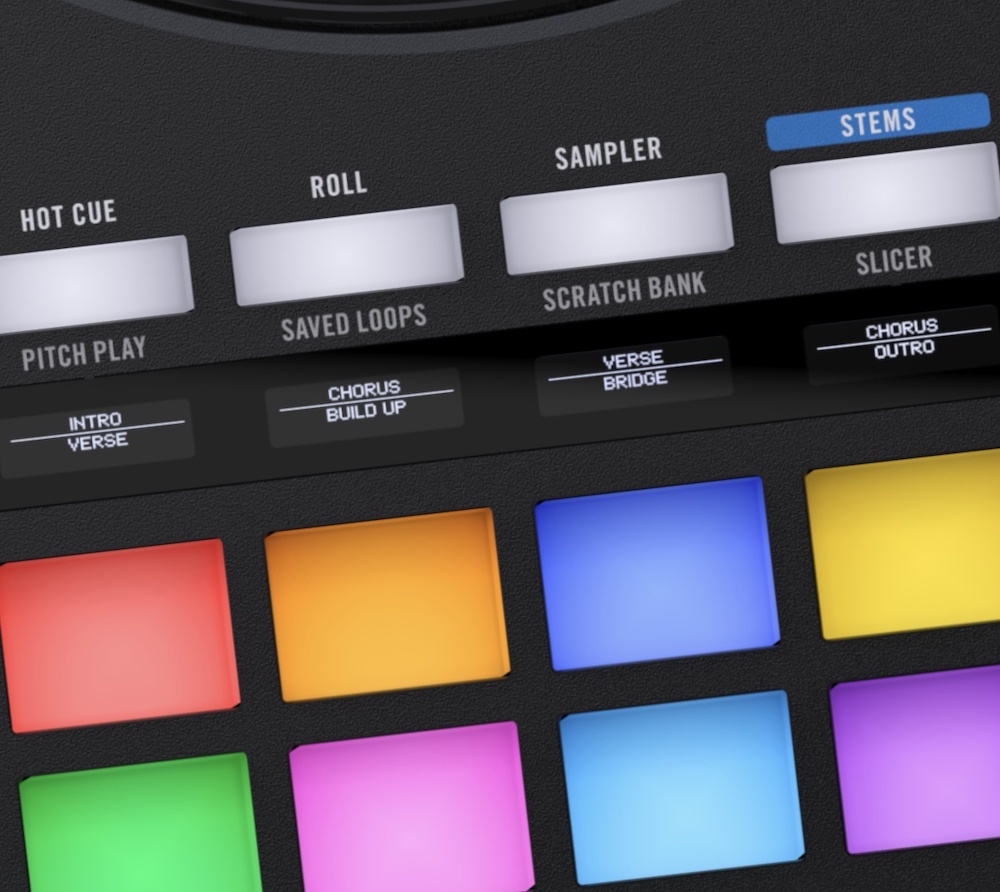The first controller designed specifically for use with Serato Stems, Rane’s Four is a sign of things to come.

One of the most pressing questions for the future of music technology is how artificial intelligence will impact the way we make, curate and perform music. AI could have huge ramifications for both production and performance – some positive, some negative – and we’re just beginning to see the first real-world examples hit the market. Serato are cautious of using the term AI, referring instead to ‘algorithms’, but the Rane Four DJ controller leans heavily into what are essentially the new AI features of Serato’s DJ Pro software, allowing you to split tracks into Stems in real time, separating the vocals, melody, bass and drums in order to unlock new mixing techniques and creative possibilities.

In recent weeks we’ve seen the announcement of Pioneer’s first Stems controller, the DDJ-FLX10, but Rane have just beaten them to the punch with the Four. It’s worth taking a moment to discuss exactly what we’re dealing with in both cases. The Rane Four is specifically designed for use with Serato and includes full Serato DJ Pro hardware unlock, whereas the FLX10 works with either Rekordbox or Serato. Both are designed to take adanntage of new software features in the two packages, which work in broadly similar ways, analysing and splitting the audio in real time to allow you to work creatively with the individual elements. There are various ways you can isolate elements of a recording using production software, but real-time, automated separation has long been something of a holy grail for remixers and DJs. The key point about Stems in both Rekordbox and Serato is that the process requires no additional preparation; you don’t need to analyse or process tracks in advance and it uses regular files, not the specialist multi-channel format required for NI’s Traktor Stems.

It’s immediately apparent that the Four is an extremely well-built piece of kit. Build quality is exceptional, with full metal construction and nice high-end touches like aluminium FX paddles, performance pad displays and a removable top plate to access the faders for servicing. In terms of hardware spec, the Four is right up there with just about any pro gear you can name. You’ll find Rane’s superb Mag Four XF contactless crossfader with adjustable tension and curve, full-size 8.5-inch jog wheels and a spacious, logical mixer layout with 22 main effects and four knob-controlled channel effects (filter, filter roll, noise and flanger). The jog wheels aren’t motorised like you might expect from Rane, but are clearly targeted at precise mixing rather than scratching. Rane claim that they’re “the smoothest and most accurate static jog wheels available on a DJ controller”, which is hard to quantify in the real world but reassuring nonetheless. With all that said, it’s the Stems features which will be of interest to most, and you can see Stem-related controls all over the place, all marked in blue, from the Stem-Split buttons adjacent to the jog wheels, to the new Stems mode for the pads and acapella/instrumental buttons alongside.

We’ll gloss over the basic functions here because, frankly, the Four ticks all the boxes just as you’d expect from any high-end controller. The real question is how well Stems work and what kind of creative options they open up. In terms of sound, it’s immediately impressive just from soloing some elements and listening to them individually; hit Stems mode for the pads and the top row become mute buttons, while the bottom row activate Stem FX. Isolating individual parts, Serato does a truly impressive job of separating the elements of a track, regardless of what style of music you throw at it. Creatively, there are a few ways you can use Stems as part of a mix, and probably more to come as people experiment and create their own approaches. In addition to Stems pad mode, the instant Stems buttons to the right of the pads allow you to activate instrumentals and acapellas at the touch of a button, leaving the pads free for things like hot cues. The most versatility comes from activating the Stem-Split feature, which immediately puts the instrumental and acapella of your chosen deck onto separate mixer channels, allowing you to apply channel effects independently, EQ and so on. All of these different approaches mean that you can mix in different elements independently when blending tracks, or cut elements in and out while a track’s playing; it’s genuinely creative, and opens up potential for some exciting new ways to mix music of all genres. It’s also worth remembering that Stems probably isn’t the finished article yet; as a software feature, it’s ripe for future development, both in terms of sound quality as well as functionality.

It’s quite difficult to make comparisons with other controllers at this point because the Four is the first Stems controller to hit the market. At £1,649 it’s a premium offering, but that feels fair given the high-end build quality and hardware spec. Pioneer’s forthcoming DDJ-FLX10 is broadly similar, and comes in slightly cheaper at £1,469, but the Four is slightly better in terms of Serato integration thanks to features like the effect paddles and performance pad displays. If you’re not fully on board with Stems, this kind of price point gives you plenty of other options, including standalone controllers such as Denon’s SC Live 4.
The Four is a controller which needs to work on two different levels; it’s heavily aimed at DJs who are going to take advantage of Serato Stems, but it also needs to work well for everything else. Reassuringly, Rane have successfully balanced those two objectives, creating something which genuinely opens up new options for DJs. It’s easy to believe that most controllers will follow a similar approach in the near future, as more and more DJs start to take advantage of the creative possibilities from Stems and similar AI technology.
Greg Scarth
More info/buy